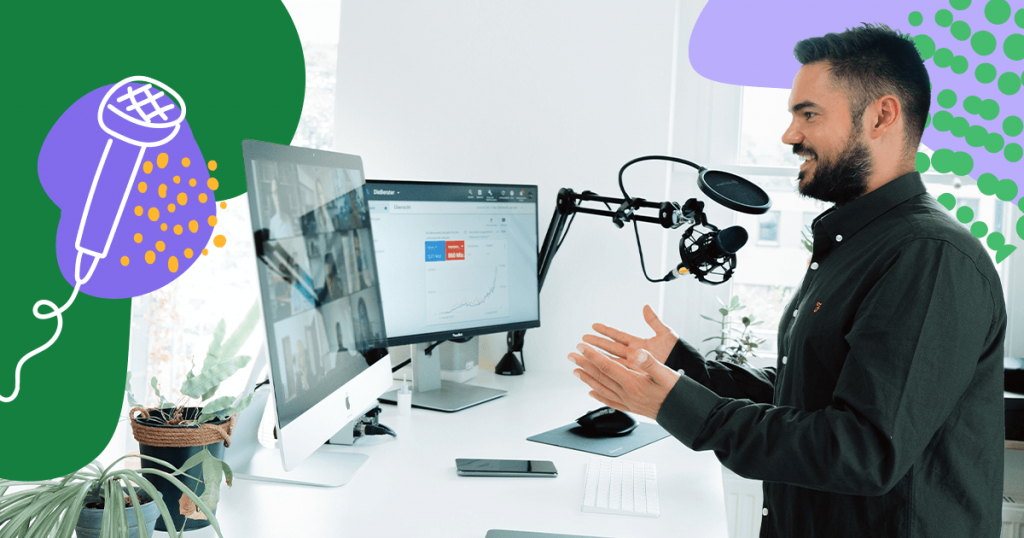We’ve been witnessing webinars becoming a powerful tool for companies in most sectors. When well planned and executed, it increases your ability to engage your audience.
That means, for example, establishing authority in your market and enhancing your brand value — things that we know come along with better sales results.
However, it is crucial to identify the best time for webinars to achieve a better return on investment.
So what’s the magic behind a good schedule? Well, one of the first things to do is to put data to work in your favor — which is precisely what you will learn here.
So, let’s start with the foundation of any good strategy!
Download this post by entering your email below
Start by the middle of the week
When it comes to a successful event, we must start with a successful plan. A research conducted by Content Marketing Institute (CMI) shows that two-thirds of B2B marketers have already used webinars — and no less than 66% believe them to be effective.
The first thing you need to consider is when your event is going to happen. Consider scheduling it for the middle of the week: Tuesday, Wednesday, or Thursday.
Mondays are usually busy. With many emails to follow up and the previous week’s to-dos, people often spend this day putting things in order.
Fridays, in turn, are for task completion and tend to register lower productivity.
That’s why most marketers take midweek as their start point.
Do the basics, then evolve
These two first tips are for establishing your strategy’s foundation before developing a more complex data-driven schedule, as we will explain next.
You can have a good audience by scheduling your webinar in the middle of the week at 11 am.
Also, you can hold the event at 1 pm or even at 2 pm. According to a Big Marker study, those are the best times to host a webinar.
Besides scheduling it next to lunchtime, the takeaway here is: no matter what, never do it exactly at people’s lunch hour.
Most workers won’t be able to attend your event, and some of them may even think they’re not your public.
Put data to work in your favor
Have you started hosting webinars? So it’s time to play your most powerful card: metrics.
Webinars demand strong invitations by email and other channels, such as your social media profiles, online advertisement, and marketing partners.
As soon as the invitation is delivered, you need a consistent follow up. Start with the key email metrics: sent, delivered, soft bounces, hard bounces, open rate, click rate, unsubscribes, spam complaints, etc.
Those numbers will help you understand your strategy outcomes — then you must compare them to your goals.
The point is: even though Thursdays at 11 am can be great for most people, does your audience fit into this generic profile? That only reliable data can tell you.
During the webinar, for instance, we better monitor real-time performance metrics. The main goal here is measuring engagement, so you can analyze the accuracy of both time and content.
Provide on-demand webinars
Here’s a valuable tip: test everything. As we mentioned, starting by the basics aiming to evolve with the help of metrics puts you on stable ground.
However, you may also go beyond the idea of just identifying people’s favorite time — you can create it. That means: go on-demand.
Even the best schedule may fail if something happens to your audience, and we know that this is common. So, to not lose those who subscribed, promote an on-demand version.
In that situation, your schedule can be a little more flexible. Once again, the basics are for starting, but with time, you will map the best strategy to increase the attendance rate.
Schedule on alternative days
When it comes to Content Marketing, frequency is crucial. In fact, one of the benefits of using webinar platforms is increasing your ability to manage planning and scheduling.
For weekly events, use data to find your best time for webinars and get attached to it. But it may be healthy to keep in touch with your audience more often.
However, in that case, avoid scheduling consecutive days of webinars — and there are a couple of reasons for that.
Firstly, people need time for daily routine, and that’s inevitable. Secondly, it tends to be harder to maintain your audience engaged.
Last but not least, consecutive webinars may cast a shadow over your best ideas.
With so much to absorb, people may feel overwhelmed, which decreases your charming impact, even though you are the greatest reference in that matter.
Let time play its role, so customers will be excited by the time you go live. Alternate days help you increase your Digital Marketing ROI by maintaining a regular audience.
To conclude, don’t forget to monitor other relevant channels and using metrics to make decisions based on reliable data.
By putting technology to work in your favor, you will be able to find the best time for webinars to adjust your editorial calendar.
As we said, a good webinar platform will help you to schedule your events, engage the public, and generate solid data. Live, Rock Contet’s solution, can help you with all of that. Request a demo and get familiar with our platform!


![[ROCK NA] [EBOOK SEO] Complete Guide](https://rockcontent.com/wp-content/uploads/2024/06/banner_Search-Engine-Optimization.png)






